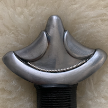-
Posts
281 -
Joined
-
Last visited
-
Days Won
2

xiayang replied to Isley's topic in Translation Assistance

xiayang replied to Fusilier's topic in Translation Assistance

xiayang replied to Tohagi's topic in Translation Assistance

xiayang replied to chinaski's topic in Translation Assistance

xiayang replied to Zoglet's topic in Translation Assistance

xiayang replied to TheWanderingB's topic in Translation Assistance

xiayang replied to AlphaRaider's topic in Translation Assistance

xiayang replied to Chriso's topic in Translation Assistance

xiayang replied to PeterCollector's topic in Translation Assistance

